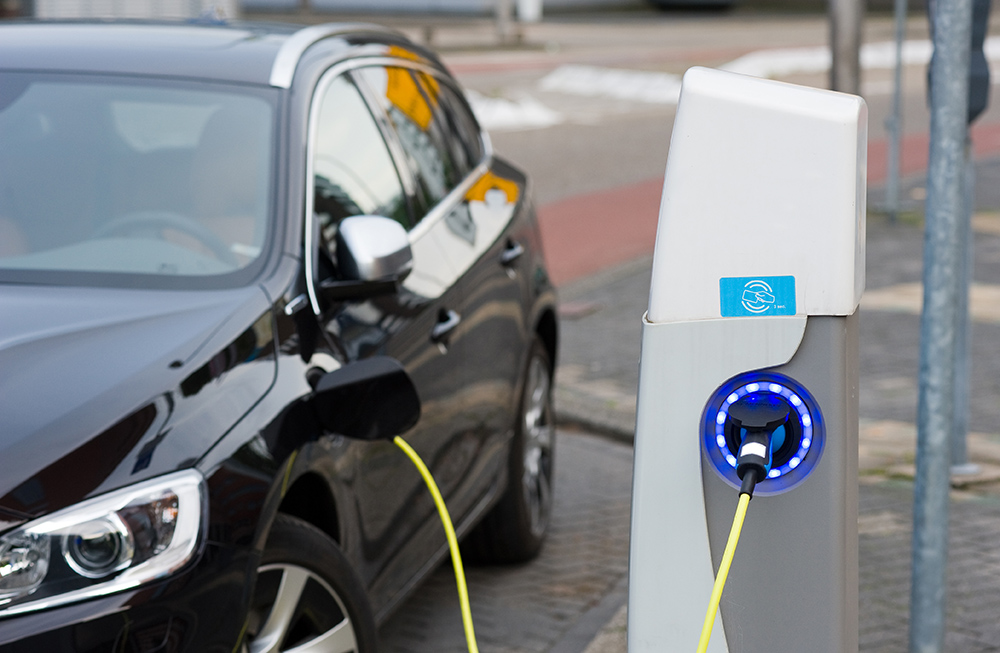EVs are for everybody, regardless of where they live, how much they earn, how they vote, or whether they like granola. What about disabled drivers, or those with special accessibility needs? The UK automotive mag AutoTrader has published a report on the pros and cons of electric driving for folks with disabilities, and some of the steps automakers and organizations are taking to improve EV accessibility.
Most drivers find EVs more pleasant to drive, and they offer special advantages to people with certain disabilities. The smoother ride can be particularly helpful to drivers who experience muscular dystrophy, joint pains or other conditions triggered by excess movement. Drivers who are sensitive to loud noises—for example tinnitus sufferers—will enjoy the quiet.
However, there are drawbacks too, and as AutoTrader notes, “While the needs of drivers with mobility restrictions are being taken into consideration more now than ever before, progress still needs to be made to ensure all cars are fully accessible.”
According to a report by The Scottish and Southern Electricity Networks (SSEN), public charging points are often hard to access for those with mobility restrictions. Handling the charging cable can present a real problem for some drivers, and many chargers can be hard to reach, as they lack the level access and space around the car that wheelchair users require.
According to SSEN, only 25% of disabled drivers surveyed feel comfortable driving an EV.
A number of organizations are working to address the issues. Allied Mobility and the Motability Scheme try to ensure the requirements of drivers with disabilities are taken into account during the planning and construction of vehicles. AccessAble is working to provide disabled drivers with pictorial guides on charging points and accessibility at car parks, using information provided by Zap-Map.
The UK’s Department for Transport is working with Motability to develop a set of standards for public charging points. Goals include ensuring that curb height, the space between bollards and the height of the charge points themselves are suitable for wheelchair users. To help drivers find usable charging sites, public chargers will be rated in one of three different categories: Fully accessible; Partially accessible; and Not accessible.
“There is a risk that disabled people are left behind as the UK’s transition to electric vehicles approaches and Motability wants to ensure that this does not happen,” said Motability CEO Barry Le Grys. “We welcome the interest from the government in our research on electric vehicle charging and accessibility and we are excited about our partnership with the Office for Zero Emissions Vehicles to further this work.”
Source: AutoTrader

buy generic lasuna over the counter – purchase himcolin online buy himcolin sale
buy cheap besifloxacin – cheap sildamax tablets buy sildamax
gabapentin canada – gabapentin 800mg oral how to get sulfasalazine without a prescription
generic benemid 500 mg – etodolac without prescription brand carbamazepine
celebrex order – celebrex generic order indocin 50mg generic
order colospa 135 mg online cheap – cilostazol pills generic cilostazol 100 mg
voltaren oral – voltaren usa aspirin usa
buy generic rumalaya – order rumalaya without prescription buy elavil 10mg online
buy mestinon generic – buy azathioprine generic order generic azathioprine
buy voveran – cheap nimodipine for sale buy cheap nimodipine
buy lioresal medication – cost feldene buy feldene generic
buy meloxicam online – order toradol 10mg without prescription toradol medication
order cyproheptadine 4 mg generic – oral cyproheptadine 4mg tizanidine us
purchase trihexyphenidyl online cheap – where can i order diclofenac gel order diclofenac gel online
buy omnicef 300mg pill – clindamycin price
order accutane 20mg online – buy dapsone without prescription buy deltasone 40mg pill
prednisone 40mg uk – how to buy elimite permethrin online
permethrin cream – buy benzoyl peroxide medication purchase retin generic
betnovate for sale – purchase adapalene online cheap benoquin uk
where to buy flagyl without a prescription – buy flagyl paypal order generic cenforce 50mg
clavulanate cheap – buy amoxiclav online cheap cheap levothyroxine pills
buy clindamycin generic – order indomethacin pill indomethacin price
buy losartan 25mg pills – cozaar brand purchase cephalexin for sale
buy eurax cream – aczone canada buy aczone sale
buy provigil 200mg without prescription – modafinil brand meloset 3 mg sale
generic zyban – oral ayurslim shuddha guggulu tablet
where to buy capecitabine without a prescription – xeloda online order danocrine 100 mg for sale
prometrium 200mg drug – cheap ponstel without prescription clomiphene buy online
where can i buy norethindrone – aygestin usa yasmin over the counter
cheap dostinex 0.5mg – buy premarin sale buy generic alesse online
estrace pill – purchase ginette 35 online purchase arimidex generic
バイアグラ гЃЉгЃ™гЃ™г‚Ѓ – г‚·г‚ўгѓЄг‚№ гЃ©гЃ“гЃ§иІ·гЃ€г‚‹ г‚їгѓЂгѓ©гѓ•г‚Јгѓ« – 50mg/100mg
eriacta murder – apcalis nearby forzest sky
order crixivan generic – buy generic confido purchase cheap voltaren gel
valif online liberty – secnidazole oral sinemet pills
modafinil 200mg ca – brand provigil 200mg order combivir without prescription
ivermectin 6mg tablets for humans – buy carbamazepine 200mg tegretol pill
deltasone for sale online – buy nateglinide 120 mg without prescription purchase capoten sale
deltasone drug – nateglinide 120 mg price brand capoten 120mg